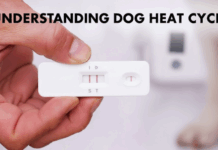Last Updated on October 6, 2024 by Dogs Vets
What Are the Advantages and Disadvantages of Dog Microchipping?
If you’re a dog owner, you’ve likely heard about dog microchipping, a modern method of identifying pets. This process involves implanting a tiny chip beneath your dog’s skin that contains a unique identification number. When scanned by a special device, the chip’s number is linked to your contact information stored in a database.
Microchipping has gained popularity due to its ability to reunite lost or stolen dogs with their owners. However, there are also some potential downsides. In this article, we’ll explore the pros and cons of dog microchipping, how it works, and whether it’s the right option for your pet.
What is a Microchip?
A microchip is a small, electronic chip sealed in a glass cylinder, roughly the size of a grain of rice. Unlike GPS devices, a microchip does not actively track your pet. Instead, it stores a unique ID number, which can be read by a scanner. The scanner activates the chip using radio waves, and the identification number is displayed on the screen. This number is linked to a database that contains your contact information.
Microchips are passive devices, meaning they don’t have batteries or moving parts, making them long-lasting and maintenance-free.

Advantages of Dog Microchipping
1. Increases the Chances of Reuniting with a Lost Dog
One of the biggest benefits of microchipping is its role in recovering lost or stolen pets. According to the American Veterinary Medical Association, dogs with microchips are more than twice as likely to be returned to their owners compared to those without.
2. Provides Proof of Ownership
In cases of disputes over ownership, the microchip acts as definitive proof. If someone claims your dog is theirs, the microchip ID can be verified with the registered database to confirm ownership.
3. Helps Maintain Medical Records
Some veterinarians store a dog’s health and vaccination records using its microchip ID, making it easier to track your dog’s medical history. This can be particularly useful for traveling or visiting new veterinarians.
4. Required for International Travel
Certain countries and regions, including the European Union, require dogs to be microchipped before traveling. Having a microchip can simplify the process of crossing borders with your pet and may help you avoid quarantine regulations.
5. Permanent and Secure Identification
Unlike collars or tags, which can be removed or lost, a microchip is implanted under the skin and cannot be easily tampered with. This makes it a reliable form of identification, even if your dog is stolen or their collar is removed.
Disadvantages of Dog Microchipping
1. Health Risks (Though Rare)
While microchipping is considered safe, there are rare instances of complications. Some dogs may experience minor side effects such as:
- Infection or inflammation at the injection site.
- Migration of the chip from its original location.
- In rare cases, tumors have been reported near the implantation site.
2. Not a GPS Tracker
A common misconception is that microchips allow real-time tracking of your dog’s location. Microchips are not GPS devices; they only work when scanned by someone, meaning you won’t be able to track your dog in real-time if they run away or get lost.
3. Cost and Inconvenience
Microchipping can cost between $25 and $100, depending on your location and the provider. While some animal shelters offer discounts or free microchipping, you may still need to schedule an appointment with a veterinarian for the procedure.
4. Reliability Issues
Although microchips are generally reliable, there are situations where they might not work as expected:
- If the chip’s information is not registered or kept up-to-date in the database.
- Compatibility issues between different scanners and chip brands.
- Failure of the person who finds your pet to have them scanned.
5. False Sense of Security
Microchipping is not a substitute for other forms of responsible pet ownership, like using collars, tags, leashes, and proper training. Relying solely on a microchip without taking preventive measures could lead to avoidable problems.
How Does Dog Microchipping Work?
Microchipping is a quick and relatively painless procedure. A veterinarian or trained professional injects the microchip just beneath the skin, typically between the shoulder blades. The process takes only seconds, and the chip remains inactive until scanned. Since the chip has no battery or moving parts, it will last for the dog’s entire lifetime without needing replacement.
After microchipping, it’s crucial to register the chip with your contact information in a national or international database. If your dog is lost, animal shelters, veterinarians, or even police officers can scan the chip and contact you using the registered information.
Can a Dog Get Sick from Microchipping?
Most dogs do not experience any adverse reactions to microchipping. However, in rare cases, a small number of dogs may develop mild inflammation or infection at the site of the injection. If you notice swelling, redness, or discomfort around the microchip area, consult your veterinarian.
Common Animals that Are Microchipped
Although dogs and cats are the most common animals to be microchipped, the technology is used in a wide variety of species, including:
- Birds (such as parrots and cockatoos)
- Horses
- Rabbits
- Turtles
- Ferrets
- Exotic animals like snakes and alligators
Even large animals like elephants and whales have been microchipped for research and conservation purposes.
10 Essential Tips for Dog Microchipping
Microchipping your dog is a crucial step in ensuring their safety and increasing the likelihood of a successful reunion if they go missing. Here are 10 essential tips to consider when microchipping your dog, along with insights into the associated risks.
1. Understand What a Microchip Is
A microchip is a small electronic device, about the size of a grain of rice, implanted under your dog’s skin. It contains a unique identification number that can be scanned by a special device, linking to your contact information stored in a secure database.
2. Choose a Reputable Veterinarian
Select a licensed veterinarian or certified professional to perform the microchipping procedure. Ensure they use an ISO-compliant microchip, which is universally recognized and can be scanned by most shelters and veterinary clinics.
3. Keep Your Information Updated
After microchipping your dog, it’s crucial to register your contact information in the microchip database. Regularly update this information if you move or change phone numbers to ensure you can be reached if your dog is found.
4. Understand the Procedure
The implantation process is quick and generally painless, similar to receiving a vaccination. A needle is used to inject the microchip between the shoulder blades, and no anesthesia is required.
5. Know the Benefits
Microchipped dogs are over twice as likely to be returned to their owners compared to those without chips. This permanent form of identification significantly increases recovery chances if your pet goes missing.
6. Be Aware of Limitations
Microchips are not GPS devices; they do not provide real-time tracking of your pet’s location. They only help identify your dog once found and scanned by someone.
7. Monitor for Side Effects
While complications are rare, some dogs may experience mild inflammation or discomfort at the injection site. Monitor your dog for any unusual reactions and consult your veterinarian if you notice anything concerning.
8. Use Collars and Tags as Well
While microchipping is essential, it should not replace traditional identification methods like collars and tags. Ensure your dog wears an ID tag with your contact information for immediate identification.
9. Educate Family and Friends
Inform family members, friends, and caregivers about your dog’s microchip details so they can assist in recovery efforts if needed. Ensure they know how to check for the chip in case of an emergency.
10. Regularly Check Microchip Functionality
Have your veterinarian scan the microchip during regular check-ups to ensure it’s functioning correctly and has not migrated from its original location.
Understanding Risks Associated with Microchipping
- Possible Health Risks: Although rare, some dogs may experience complications such as infection or migration of the chip after implantation.
- Database Issues: If the database linked to the microchip is outdated or inaccessible, it may hinder recovery efforts.
- False Sense of Security: Relying solely on microchipping can lead some owners to neglect other safety measures like collars, tags, and proper training.
- Cost Considerations: The cost for microchipping can range from $25 to $100 depending on location and provider, which may be a consideration for multi-pet households.
By following these tips and understanding both the benefits and risks associated with dog microchipping, you can make an informed decision that prioritizes your pet’s safety and well-being.
Final Thoughts: Should You Microchip Your Dog?
Deciding whether to microchip your dog depends on various factors, such as your pet’s lifestyle, your concerns about safety, and your budget. Microchipping offers a permanent, reliable form of identification, which can significantly increase the chances of finding your dog if they go missing.
However, microchips are not without their limitations. They are not GPS trackers, and they don’t guarantee your dog’s safety or return. You’ll still need to take care of your dog by using other preventative measures like collars, tags, fences, and proper training.
FAQs About Dog Microchipping
1. How long does a dog microchip last?
A microchip is designed to last for the lifetime of your pet. Since it doesn’t have any moving parts or batteries, it remains functional indefinitely.
2. Can a microchip be removed?
Microchips are designed to be permanent and are rarely removed. If removal is necessary, it would require surgery, which could pose risks to the pet.
3. Do I need to update the microchip information?
Yes, keeping your contact information up to date in the microchip database is crucial. If your phone number or address changes, be sure to update it with the microchip provider to ensure your dog can be returned to you.
4. Is microchipping mandatory for dogs?
In some countries and states, microchipping is required by law for dogs, especially for those traveling internationally. Check local regulations to see if it’s mandatory where you live.
5. What happens if a dog’s microchip isn’t registered?
If a microchip isn’t registered or updated with current contact information, it becomes much harder to reunite lost dogs with their owners. Make sure you register and maintain accurate records with the chip provider.
See also: AVMA review fоr guidаnсe оn sсаnning рrосedures tо reduсe the likelihооd оf missing miсrосhiрs.
Fact Check
We strive to provide the latest valuable information for pet lovers with accuracy and fairness. If you would like to add to this post or advertise with us, don’t hesitate to reach us. If you see something that doesn’t look right, contact us!
Reference: Avma.org

















